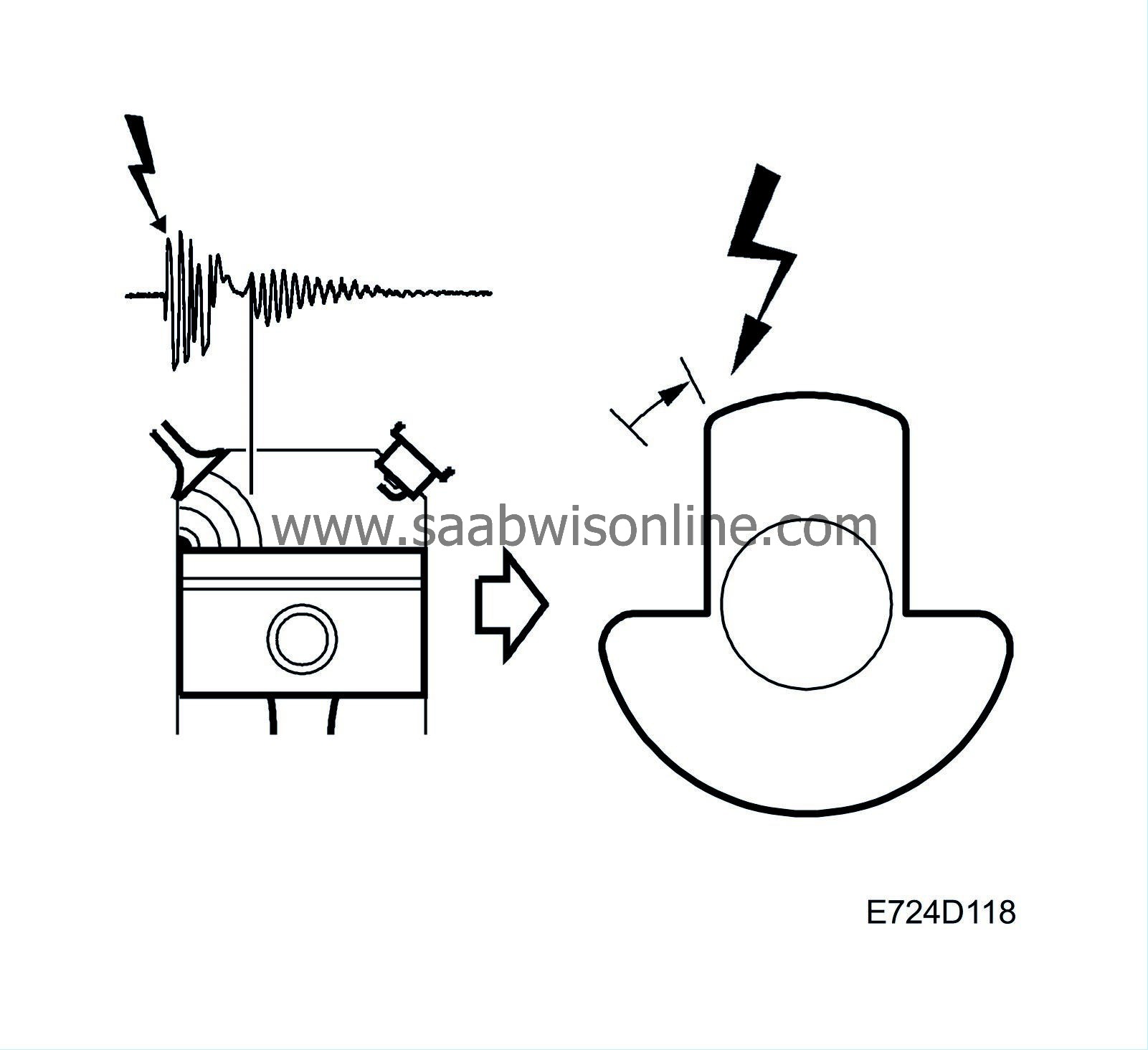Knock control
| Knock control |
Trionic T7 does not have a conventional knock sensor. Instead, the ignition discharge module analyses the ionization current across the spark plug gap on all cylinders and sends a knock signal from each cylinder to control module pin 38.
From the combustion signals, the control module will be aware of which cylinder has fired and if a knock signal above a certain level is registered at the same time by the control module, it will gradually retard the ignition for the cylinder in questio n until the knocking ceases. Timing correction then returns slowly to zero.
If the mean value of the ignition retardation on all cylinder exceeds a certain level, fuel enrichment will take place. If the mean value of the ignition retardation on all cylinders increases further despite fuel enrichment, the maximum permissible air mass/combustion will be limited.
The control module expects the knock signal to be at a certain level as the spark is produced, so it will therefore start the actual knock detection in the respective cylinder only after the spark has been produced.
| Diagnostics |
| • |
If there is an open circuit or a short circuit on the knock lead between the ignition discharge module and the control module, diagnostic trouble code P0327 will be generated.
|
|



